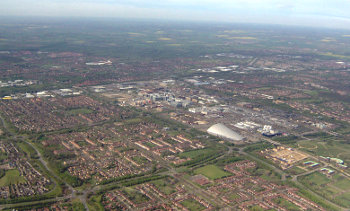Original Settlements in Milton Keynes
 |
Milton Keynes may be a new town but the designated area was not unpopulated until the 1960s. It included three smaller towns and a number of villages and hamlets which today form the core of the new town. Milton Keynes itself was named after the existing village of Milton Keynes which, just like the majority of other original settlements, is today a district of Milton Keynes. |
Here are some of the most notable original settlements in Milton Keynes:
Bletchley. The constituent town in south-west Milton Keynes entered history in the 12th century but it grew to prominence only after the arrival of the London and North Western Railway in the mid-19th century. Bletchley is best known for the Bletchley Park, the current National Museum of Computing which was the home to the Government Code and Cypher School during World War II. It was the Bletchley Park where the British intelligence enciphered the famous Enigma code.
Stony Stratford. Another constituent town in north-west Milton Keynes has a history dating back to the Roman period. In 1194, it was chartered as a market by King Richard I and as a town only two decades later when it was grated letter patent by King John. The town was an important stopping point for travellers on the road to Ireland from the 15th century until the arrival of the railways from London to Birmingham when its importance as a stopping point began to decline. But it again rose to prominence for travellers, most notably motorists after the arrival of the A5 road.
Wolverton. History of the modern Wolverton starts in the 19th century but north and west from modern town was a medieval village which was recorded in the Domesday Book of 1086. The original village, however, disappeared. All that is left from the medieval village are field patters. The area of the original settlement is called Old Wolverton.
New Bradwell. Just like Milton Keynes, New Bradwell is a modern settlement which entered history only 150 years ago when workers in the Wolverton Works started to build dwellings here. It was originally called Stantonbury, while the change of the name it thought to occur in the early 1920s.
Willen. This ancient village is today a district of Milton Keynes. Willen which was first recorded in the 12th century is today best known for the balancing lake on the River Ouzel which is a favourite spot of many rare bird species. At the lake is also found a 17th century parish church designed by Robert Hook, a Buddhist temple and the so-called Peace Pagoda which is the first of its kind in the western hemisphere.
Walton. The historic hamlet that is located along the Walnut Tree district and Walton Road was first recorded in the 12th century. Walton Hall - the ancient parish is home to The Open University, a distance learning and research university which is with 250,000 students enrolled one of the largest universities in the world.